25 ++ e coli symptoms in humans 126254-What are the first signs of e coli
Symptoms of E coli Most people infected with Shiga toxinproducing E coli experience severe stomach cramps, diarrhea (often bloody), and vomiting Symptoms usually start 3 to 4 days after swallowing the bacteriaHow is E coli contracted?E coli naturally resides in the intestines of all humans, usually doing no harmBut some E coli are pathogenic, meaning they can cause illnessWith UTIs, the E coli bacteria from the intestines
Plos Pathogens Transient Microbiota Exposures Activate Dormant Escherichia Coli Infection In The Bladder And Drive Severe Outcomes Of Recurrent Disease
What are the first signs of e coli
What are the first signs of e coli-It can also cause lifethreatening symptoms such as Adult kidney failure Fever Bleeding Confusion SeizuresSymptoms of E coli infection typically occur within two to eight days of eating contaminated food, with an average onset of three to four days The main symptoms are severe bloody diarrhea and stomach cramps In some cases, the infection causes nonbloody diarrhea Usually little or no fever develops



Escherichia Coli Infections American Academy Of Pediatrics
Escherichia coli (ĕsh'ərĭk`ēə kō`lī), common bacterium that normally inhabits the intestinal tracts of humans and animals, but can cause infection in other parts of the body, especially the urinary tractIt is the most common member of the genus Escherichia, named for Theodor Escherich, a German physicianE coli is a Gramnegative, rodshaped bacterium propelled by long, rapidlyNausea Another common symptom of an E coli infection is nausea Nausea is the queasy feeling that you notice in your stomach and throat when you are not feeling well, and often results in vomiting When you have an E coli infection, you may feel generally nauseous at all timesEcoli is of rodlike shape and belongs to the Enterobacteriaceae family, and it is a gramnegative bacteria and a facultative anaerobe (suits environment with or without air) Strains such as Shiga toxin produce Ecoli (STEC), which quickly cause foodborne diseases that are then passed to humans through contaminated food
E Coli or Escherichia coli are naturally present in your gut Most strains are harmless and considered to be healthy bacteria However, some pathogenic strains can cause you a lot of distress These bacteria are usually transmitted by consuming contaminated foods The good thing is, the early symptoms of E Coli sickness can be taken care ofMoreover, constipation and bloating are cured, due to the fact that E coli doesn't allow the waste accumulation in the body So, as you may see, E coli is extremely useful for overall health, treating effectively respiratory and gastrointestinal problems Medical benefitsShigatoxin producing E coli is abbreviated as STEC Symptoms of infection with this germ include watery or bloody diarrhea, fever, abdominal cramps, nausea, and vomiting The illness can be mild to severe Young children are more likely to have severe problems with Ecoli O157—including kidney failure—and can even die from E coli O157 infections
Symptoms of E coli Most people infected with Shiga toxinproducing E coli experience severe stomach cramps, diarrhea (often bloody), and vomiting Symptoms usually start 3 to 4 days after swallowing the bacteriaEscherichia coli is a bacterium that naturally lives in the intestines of healthy animals and humans, however, there are strains of E coli, specifically O157H7, that cause food poisoning Feces can contaminate food with E coli through runoff and improper sterilizationE coli is a common bacteria that lives in the lower gastrointestinal tract of humans and animals It also can be isolated from water and soil Although most strains are harmless, some strains of E coli are capable of producing powerful toxins that can cause severe illness



E Coli Infections Linked To Chopped Salad Kits Cdc Warns



E Coli Bacteria Preventing E Coli Infections
Symptoms can last anywhere from a few days to more than a week Symptoms of a severe E coli infection might consist of bloody urine;E coli K12 is a rodshaped bacterium measuring a few microns in length and 05 µm wide Being a prokaryote, it lacks a nuclear membrane Its 4377 genes reside on a single circular, doublestranded DNA molecule tightly packed within the cytosol of the cell (Fig 1)However, it should be noted that pathogenic E coli strains such as O157H7 have many more genes (5416)E coli infections occur most frequently while traveling to areas of the world with poorer hygiene than we have here in North America It is transmitted via fecal contamination of food, water, etc Symptoms of an E coli infection include Abdominal pain;


Q Tbn And9gcqkye60ou Johpr02n Mbv1fferrjpdh Lnct7ymdf5qhyia1ld Usqp Cau



E Coli Ways To Avoid And Reduce Foodborneillnesses
Individuals with E coli infections exhibit symptoms like abdominal cramps, vomiting, and bloody diarrhea Foods That Could Contain E coli Other than the host bacteria multiplying in the body, strains of E coli can be ingested through different types of foods, causing food poisoningSymptoms Symptoms of Shiga toxinproducing E coli (STEC) infection vary for each person, but often include severe stomach cramps, diarrhea (often bloody), and vomiting Some people may have a fever, which usually is not very high (less than 101˚F/385˚C) Most people get better within 5 to 7 daysEscherichia coli (EColi) is the resident bacteria in the intestines of animals and humans Several ecoli strains are a part of gut flora and are harmless In fact, a few ecoli strains keep the digestive tract healthy However, some strains like E coli O157 H7 can cause severe problems like diarrhea, vomiting, abdominal cramps, etc



E Coli Infections Bigger Killer Than Legionella Proeconomy



Molecular Mechanisms Of Escherichia Coli Pathogenicity Nature Reviews Microbiology
E coli refers to a wide range of bacteria that can cause various diseases, including pneumonia, urinary tract infections, and diarrhea Most strains of E coli are harmless to humans Some strainsThe closely related E coli bacteria are generally neutral, or even beneficial, but a few strains are pathogenic, and can cause diarrhea Although most cases of E coli infection result in mild, foodpoisoninglike symptoms, E coli can give rise to hemolytic uremic syndrome, a disease similar to dysentery, and potentially lifethreateningE coli is a bacteria found in the intestines of humans and all warmblooded animals Infections send more than 3,000 people to the hospital every year E coli symptoms include loss of appetite, nausea, gas and flatulence, chronic fatigue, sudden diarrhea that is very watery, and bloody stools



Increase In Cases Of E Coli Infections Due To Hot Weather



E Coli Lawyers Oft Food Safety Injury Lawyers
Escherichia coli is classified as a rod‐shaped, Gram‐negative bacterium in the family EnterobacteriaceaeThe bacterium mainly inhabits the lower intestinal tract of warm‐blooded animals, including humans, and is often discharged into the environment through faeces or wastewater effluentSymptoms of E coli infection commence about 3 to 5 days after being exposed to the bacteria The features include Pain in the abdomen Diarrhea, which may be bloody occasionally Nausea and vomiting What Are The Causes Of E coli Infection?The O157H7 strain of E coli is an example of a harmful strain that can cause severe symptoms in the body E Coli Symptoms While minor cases of food poisoning can cause an upset stomach and diarrhea, E coli tends to bring on more severe symptoms, anywhere from one day after exposure to the bacteria to one week Symptoms of an E coli


Patedu Com E Coli Infections



Escherichia Coli Infections American Academy Of Pediatrics
Usual signs and symptoms of E coli infections are nausea, vomiting, stomach cramps gas production and diarrhea;Escherichia coli (/ ˌ ɛ ʃ ə ˈ r ɪ k i ə ˈ k oʊ l aɪ /), also known as E coli (/ ˌ iː ˈ k oʊ l aɪ /), is a Gramnegative, facultative anaerobic, rodshaped, coliform bacterium of the genus Escherichia that is commonly found in the lower intestine of warmblooded organisms (endotherms) Most E coli strains are harmless, but some serotypes (EPEC, ETEC etc) can cause serious foodE coli infection symptoms vary depending on the type of infection but often include watery or bloody diarrhea, severe stomach cramps, nausea, vomiting, confusion, and fatigue Symptoms may take a



Reporting Timeline Outbreaks E Coli Cdc



E Coli Infection Argentina Pdf Ppt Case Reports Symptoms Treatment
A particular strain of E coli known as E coli O157H7 causes a severe intestinal infection in humans It is the most common strain to cause illness in people It can be differentiated from other E coli by the production of a potent toxin that damages the lining of the intestinal wall causing bloody diarrheaIndividuals with E coli infections exhibit symptoms like abdominal cramps, vomiting, and bloody diarrhea Foods That Could Contain E coli Other than the host bacteria multiplying in the body, strains of E coli can be ingested through different types of foods, causing food poisoningCall your doctor if you experience any of these severe symptoms



National Enteric Disease Surveillance Shiga Toxin Producing Escherichia Coli Stec Annual Report 16 E Coli Cdc
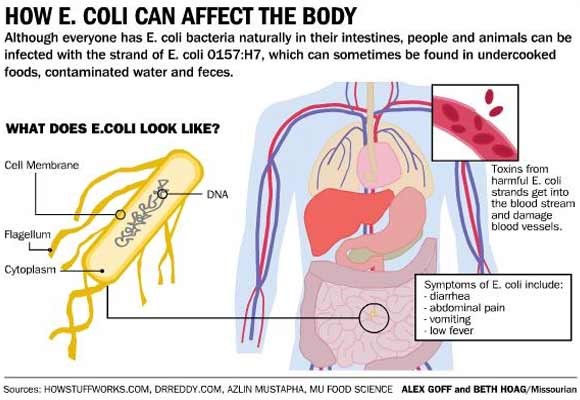


32 States Involved In E Coli Outbreak Is Yours One Andrews Thornton
As mentioned previously, only a small number (10–100) of organisms are required to cause disease in humans Therefore, healthy people can become infected even if the contaminated food contains only a low number of E coli 0157H7 Almost all other EEC E coli strains require a much higher number (thousands to millions) of ingested organisms to cause diseaseColi or Escherichia coli are bacteria that live in the colon of healthy people Most varieties of the bacteria are not dangerous or may just trigger moderately short spells of diarrhea But a few vicious strains cause severe abdominal pain, vomiting and bloody diarrhea"Escherichia coli (E coli) bacteria normally live in the intestines of people and animals Most E coli are harmless and actually are an important part of a healthy human intestinal tract However, some E coli are pathogenic, meaning they can cause illness, either diarrhea or illness outside of the intestinal tract



Symptoms Of E Coli Infection About E Coli



Amazon Com Escherichia Coli Infections Deadly Diseases And Epidemics Ebook Manning Shannon D Babcock Hilary M D Heymann David Kindle Store
Symptoms of E coli infection Symptoms can start from 110 days after you are exposed to the germ The first sign is severe abdominal cramps that start suddenly After a few hours, watery diarrhea starts The diarrhea causes your body to lose fluids and electrolytes (dehydration) This makes you feel sick and tiredE coli infections are the result of coming into contact with food or water contaminated by feces This could come from unclean food sources and also contaminated water supplies;Symptoms Diarrhea, which may range from mild and watery to severe and bloody Stomach cramping, pain or tenderness Nausea and vomiting, in some people



Escherichia Coli Colony Morphology And Microscopic Appearance Basic Characteristic And Tests For Identification Of E Coli Bacteria Images Of Escherichia Coli Antibiotic Treatment Of E Coli Infections



Tackling E Coli Infections
Signs and symptoms can include dehydration, renal failure (fluid retention, swelling, shortness of breath), anemia (pale skin), easy bruising (blood clotting problems), septic shock ( low blood pressureIt can cause neurological complications (such as seizure, stroke and coma) in 25% of HUS patients and chronic renal sequelae, usually mild, in around 50% of survivors Persons who experience bloody diarrhoea or severe abdominal cramps should seek medical careUsual signs and symptoms of E coli infections are nausea, vomiting, stomach cramps gas production and diarrhea;



E Coli Infections Thwarted By Flu Treatments Health And Medicine



Escherichia Coli
Accidentally ingesting lake, pool, or river water can lead to an E coli infectionWhen E coli causes a gastrointestinal infection, the cat might show symptoms such as vomiting and diarrhea (some of which might contain blood), and might have no interest in food whatsoever Pyometra is a condition that more commonly occurs when the cat is in heat or right after a heat cycleThe most common type of E coli that causes illness is Shiga toxinproducing E coli (STEC) 1 The common symptoms of gastrointestinal (GI) disease caused by STEC are Diarrhea (may be bloody)



Health Matters Preventing Infections And Reducing Antimicrobial Resistance Gov Uk



Foodborne Enterotoxigenic Escherichia Coli From Gut Pathogenesis To New Preventive Strategies Involving Probiotics Future Microbiology
E coli are a diverse group of bacteria that normally live in the intestines of humans and animals Although most strains of these bacteria are harmless, some produce toxins that can make you sick and cause diarrhea (loose stool/poop) such as Shiga toxinproducing E coli (STEC)Learn More Vomiting, abdominal pain, fever, and diarrhea are all symptoms of gastroenteritis — commonly referred to as "food poisoning" — and can be caused by either eating or drinking coliform bacteria, especially strains of salmonellaDehydration Call your doctor if you experience any of these severe symptoms


Q Tbn And9gctiujzsc 7svicomnsrrtalvi0oi2xr1qxc8tl54eebot Pknkh Usqp Cau



E Coli Infections
Depending on the bacterial subtype (determined by detection of certain surface antigens), other symptoms such as fever and bloody diarrhea may occurLater or late symptoms of E coli infections may include Hemorrhagic diarrhea (large amounts of blood in the stools) Anemia;E coli refers to a wide range of bacteria that can cause various diseases, including pneumonia, urinary tract infections, and diarrhea Most strains of E coli are harmless to humans Some strains


Q Tbn And9gcqksoeyhk0r7phnhaimry3xpw1noc8z1ifj7d7yysogp61j 26c Usqp Cau



Symptoms Of An E Coli Infection Everyday Health
E coli is the name of a type of bacteria that lives in your intestines Most types of E coli are harmless However, some types can make you sick and cause diarrhea One type causes travelers' diarrhea The worst type of E coli causes bloody diarrhea, and can sometimes cause kidney failure and even deathYou have diarrhea for more than three days and You can't keep any fluids down You have blood in your poop You are feeling very tired You have many bouts of vomiting You have a fever higher than 102 °F You are not peeing (urinating) a lot You are losing pink color in cheeks and inside yourLittle or no urine output;



E Coli Infection Japan Pdf Ppt Case Reports Symptoms Treatment



Here S How E Coli Infections Spread From Animals To People And What You Can Do To Reduce Your Risk Of Getting Sick Business Insider India
Depending on the bacterial subtype (determined by detection of certain surface antigens), other symptoms such as fever and bloody diarrhea may occur Severe infections can occur;Escherichia coli is a bacterium that naturally lives in the intestines of healthy animals and humans, however, there are strains of E coli, specifically O157H7, that cause food poisoning Feces can contaminate food with E coli through runoff and improper sterilizationSymptoms of a severe E coli infection may include bloody urine;



Bacteriophage Therapy In Effective Control Of E Coli Infections In Poultry Engormix


Plos Pathogens Transient Microbiota Exposures Activate Dormant Escherichia Coli Infection In The Bladder And Drive Severe Outcomes Of Recurrent Disease
Ecoli is of rodlike shape and belongs to the Enterobacteriaceae family, and it is a gramnegative bacteria and a facultative anaerobe (suits environment with or without air) Strains such as Shiga toxin produce Ecoli (STEC), which quickly cause foodborne diseases that are then passed to humans through contaminated foodE coli symptoms include loss of appetite, nausea, gas and flatulence, chronic fatigue, sudden diarrhea that is very watery, and bloody stools All infections come from swallowing the bacteria, with contaminated food (especially beef) being the primary source of concern



E Coli Infection Escherichia Coli Infection Causes Diagnosis Symptoms Treatment Risk Factors Prevention



Is E Coli Contagious How To Minimize Risk Of Infection Everyday Health



Is A Urinary Tract Infection Uti Contagious



What Is E Coli Symptoms Causes Diagnosis Treatment And Prevention Everyday Health



Escherichia Coli Online Presentation



What Is E Coli Symptoms And Signs Of Bacteria That Caused Egypt Deaths



State Health Officials Launch Investigation Into E Coli Infections



Epididymitis And Orchitis Harvard Health



25 E Coli Infectious Early And Later Symptoms Treatment And Prevention



E Coli Infections Could Be Reduced With Probiotics Show Non Human Studies


E Coli What Is It How Does It Cause Infection Symptoms Causes



Spike In Acute E Coli Infections Seen In Seattle And King County



Escherichia Coli Infections E Coli Or Colibacillosis Ppt Video Online Download



E Coli Infection In Canada The Canadian Encyclopedia



E Coli Infection Symptoms Causes And Treatment



What Is E Coli Live Science


3


4 4 7 Escherichia Coli Infections Technical Manual Porcine Proliferative Enteropathy Ileitis The Pig Site The Pig Site



E Coli Infection Healthy Pets Healthy People Cdc



Escherichia Coli Infections Diseases Of Poultry The Poultry Site The Poultry Site



Escherichia Coli Wikipedia


E Coli Infection



Complications Of E Coli Infection About E Coli



E Coli What You Need To Know Iidr



Asm Tracking In Vivo Infection Of C Rodentium A Model For Human Enteropathogenic E Coli Infection Iaijournal T Co 59rljzyz5o T Co X8iwnm8mnp



17 Of The Worst Foodborne Illness Outbreaks In U S History



Team Identifies Potential Drug Target For Severe I E Coli I Infections Technology Networks
:max_bytes(150000):strip_icc():format(webp)/e-coli-symptoms-diagnosis-treatment-4174407_FINAL-5bc3f6a2c9e77c0051aa3143.png)


E Coli Shahrook Ahmed



E Coli Avoiding Foodborne Disease



E Coli Infections Peritonitis In Layers Dutchland Farms



E Coli Infection India Pdf Ppt Case Reports Symptoms Treatment



E Coli Symptoms In Humans Page 1 Line 17qq Com



Differences Between E Coli Salmonella Earth And Human


Escherichia Coli Bacteria Appearance Dangerous Infections And Diseases E Coli O157 H7 Treatment Organs And Body Parts Affected By E Coli O157 H7 Bacteria Cell Morphology And Gram Stain Gram Negative Bacteria



E Coli Infections Peritonitis In Layers Dutchland Farms



E Coli A Disease That Has Affected Many World Wide Ppt Video Online Download


Sgugenetics Escherichia Coli
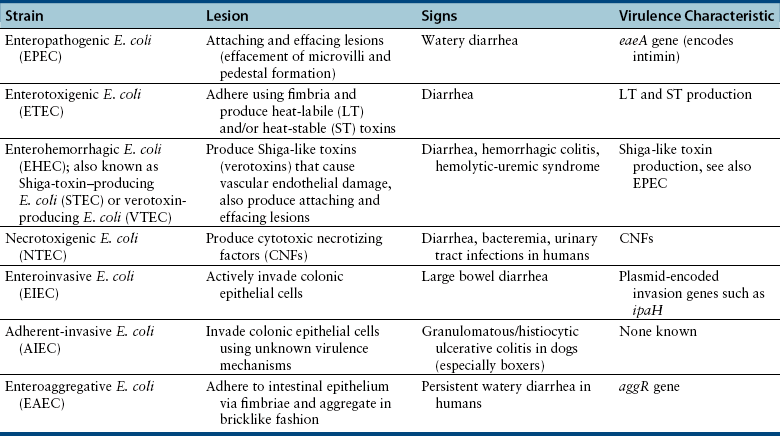


Enteric Escherichia Coli Infections Veterian Key


E Coli Symptoms And Causes Mayo Clinic



25 E Coli Infectious Early And Later Symptoms Treatment And Prevention
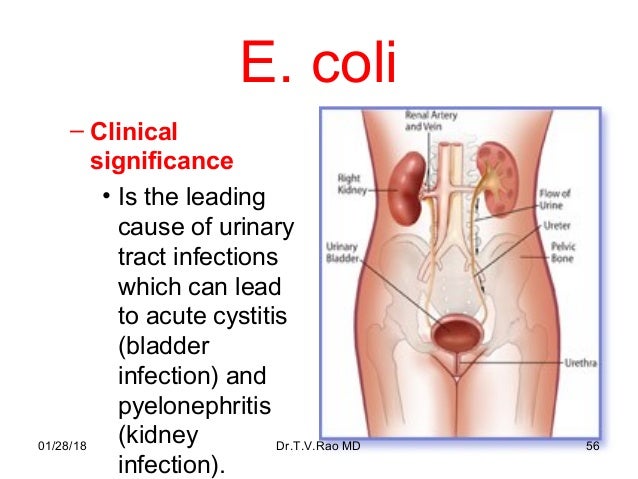


Enterobacteriaceae For Students In Microbiology By Dr T V Rao Md



E Coli Infections Causes Treatment And Prevention Nova Science Publishers



No Sign Of E Coli In Malta



Escherichia Coli Infections Diseases Of Poultry The Poultry Site The Poultry Site
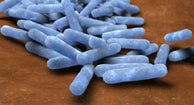


E Coli Infection Causes Symptoms Prevention Risks More



E Coli Infection Symptoms Causes And Treatment



E Coli Symptoms 6 Ways To Help Recover 4 Prevention Tips Dr Axe



Poor Toilet Hygiene Likeliest Cause Of Resistant E Coli Infections Nursing Times



E Coli Infections


Plos One Interactions With M Cells And Macrophages As Key Steps In The Pathogenesis Of Enterohemorragic Escherichia Coli Infections



E Coli Infections Medlineplus



Intestinal E Coli Infections Sepsis Alliance
/e-coli-symptoms-diagnosis-treatment-4174407_FINAL-5bc3f6a2c9e77c0051aa3143.png)


E Coli Symptoms Diagnosis And Treatment



E Coli And Urinary Tract Infections Utis Everyday Health



German Authorities Investigate E Coli Infections Involving Daycare Centers Food Safety News



Escherichiosis



How E Coli Cells Work In The Human Gut Uconn Today



Scotland Reports Rise Of E Coli Infections In 18 Food Safety News


Escherichia Coli Infection Western New York Urology Associates Llc



Recent Advances In Understanding Enteric Pathogenic Escherichia Coli Clinical Microbiology Reviews



Lettuce Talk About E Coli Friday S Focus Thenewsenterprise Com



Treating E Coli Symptoms In Preppers Dos And Don Ts



The Super Toxic Strain Is A Mutant Form Of Two E Coli Bacteria



E Coli Escherichia Coli E Coli Cdc



Potential Drug Target For Dangerous E Coli Infections Identified Unsw Newsroom



E Coli Infections



E Coli Infection Israel Pdf Ppt Case Reports Symptoms Treatment



Bacteriophage Therapy In Effective Control Of E Coli Infections In Poultry Engormix



What Is E Coli With Pictures



E Coli Fact Sheet All About E Coli 0757 H7 Sani Professional



E Coli Infections What You And Your Family Need To Know Montreal Children S Hospital
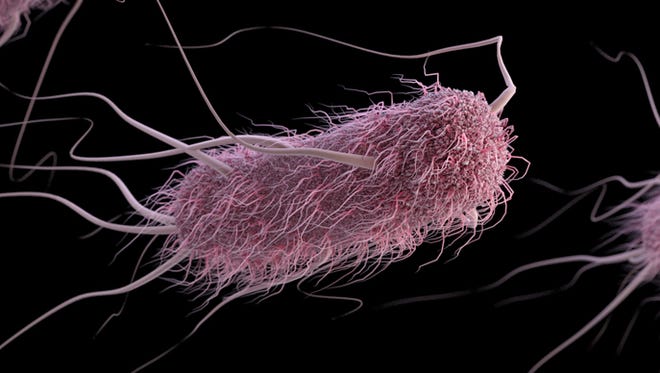


E Coli Outbreak Cdc Investigating Cases In Ohio 6 Other States



Kidney Infection In Dogs Symptoms Causes Treatments Dogtime



Escherichia Coli Infections Deadly Diseases And Epidemics Manning Shannon D Amazon Com Books


コメント
コメントを投稿